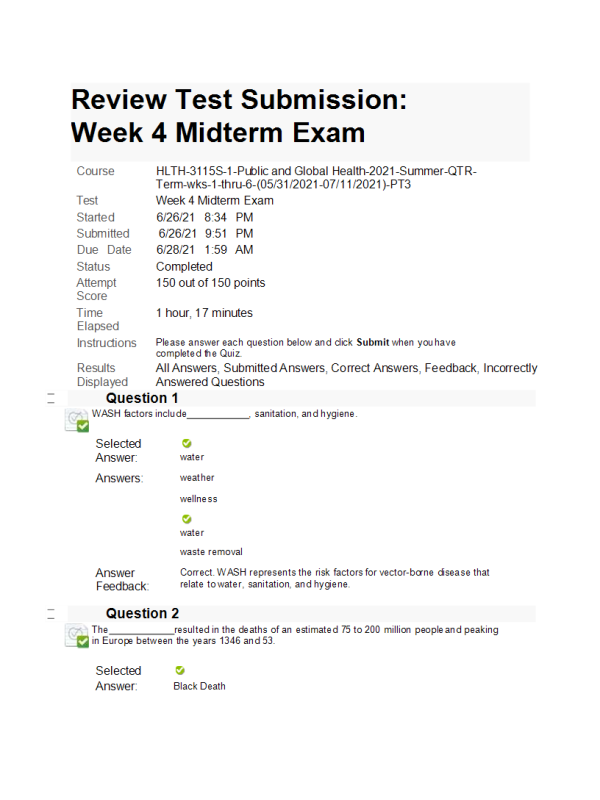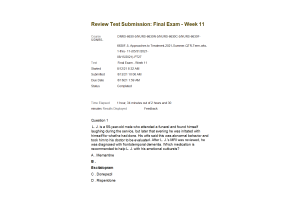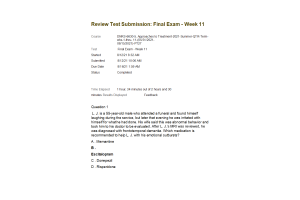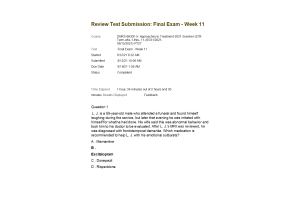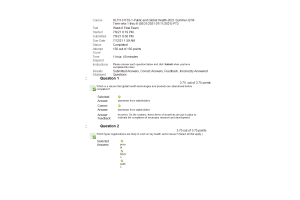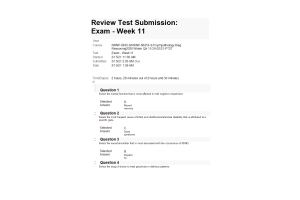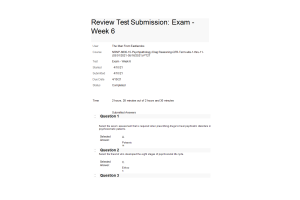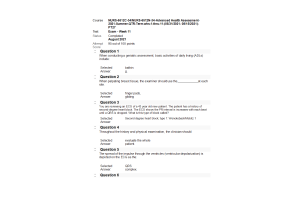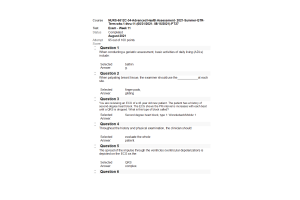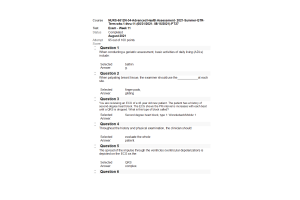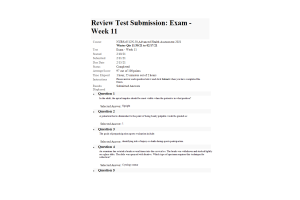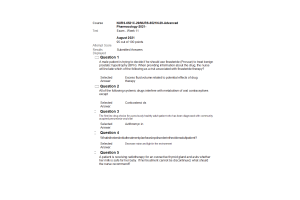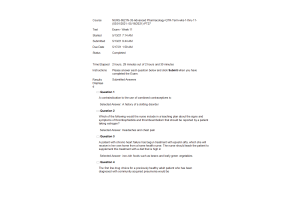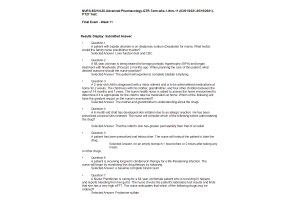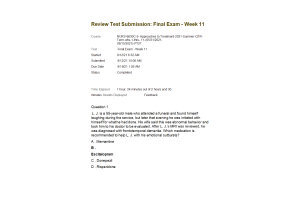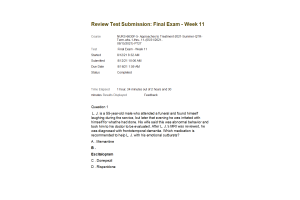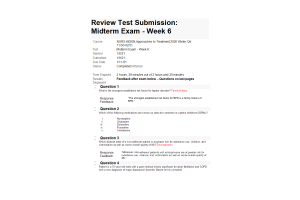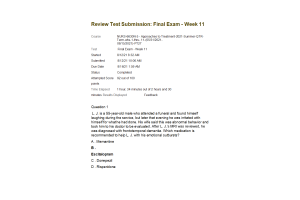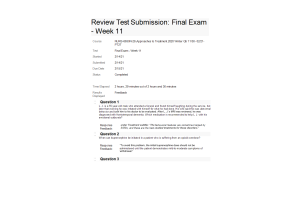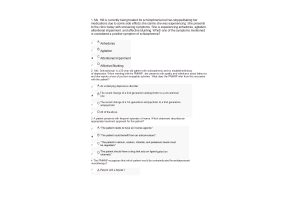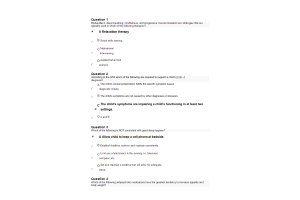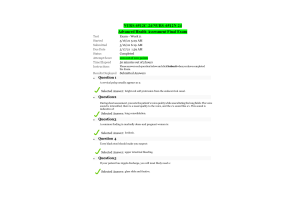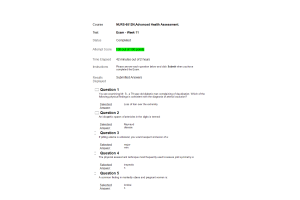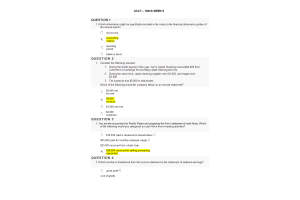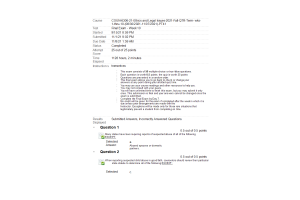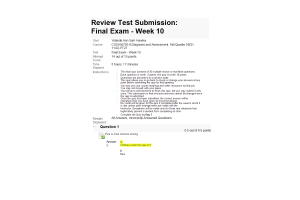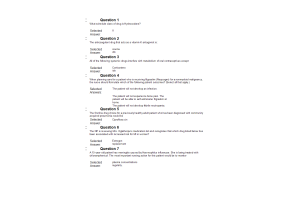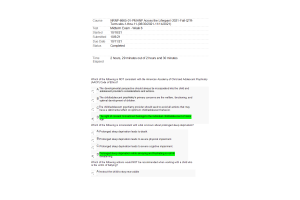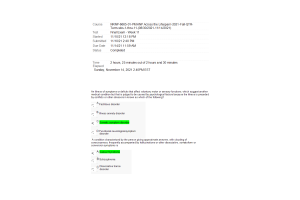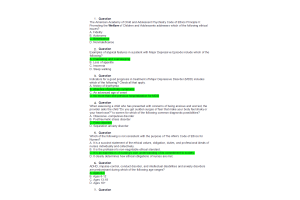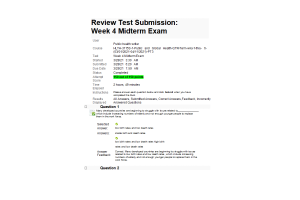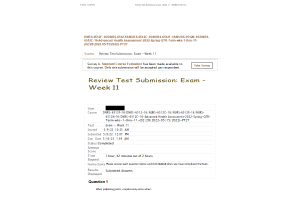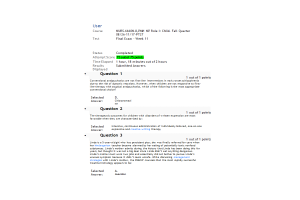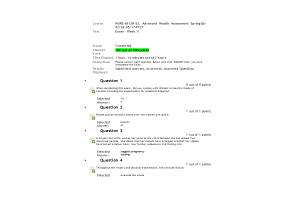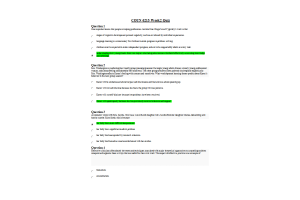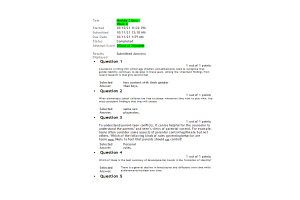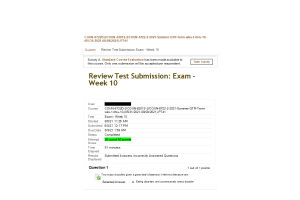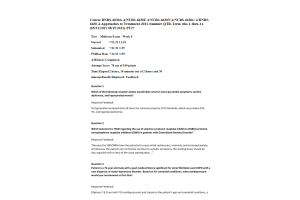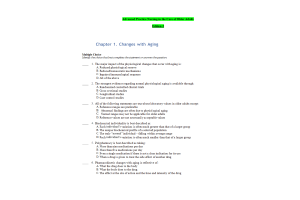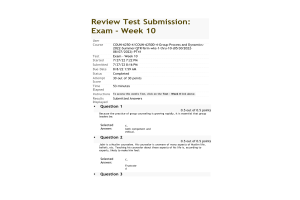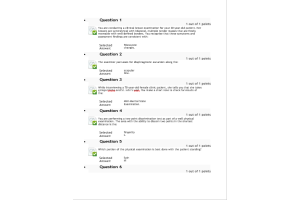HLTH 3115S-1, Week 4 Midterm Exam
- $35.00
- Question: WASH factors include, sanitation, and hygiene.
- Question: The resulted in the deaths of an estimated 75 to 200 million people and peaking in Europe between the years 1346 and 53.
- Question: Which infectious disease makes the body more at risk for other infections?
- Question: The laws, regulations, and priorities that govern your community or state and how these components influence the health of individual citizens are known as which type of health determinant?
- Question: Which of the following must be improved for successful poverty elimination efforts?
- Question: The parasitic disease that is transmitted by mosquitoes and is particularly prevalent in Southeast Asia and sub-Saharan Africa is called:
- Question: The design and implementation of must factor in local cultural belief systems and practices.
- Question: Which vector-borne disease is commonly introduced through rodent infestation on cargo ships?
- Question: is the collection, analysis, and use of data to target public health prevention.
- Question: Which of the following illnesses can be transmitted via blood and bodily fluids and weakens the immune system so that it does not function as well, allowing foreign pathogens to invade the body?
- Question: Because they generally require the blood of another organism to survive, most vectors are
- Question: Diarrheal disease is a leading cause of death across the world and it can often be linked to which of the following?
- Question: The advent and prevalence of antibiotics led to a high birth rate and low death rate, causing a phenomenon that we are still experiencing. What is that phenomenon?
- Question: is the study of human populations and fluctuations in population growth.
- Question: Which portion of the population in low income regions is most at risk of dying from malaria?
- Question: Overpopulation creates two forms of environmental threats: the generation of waste and what else?
- Question: Which MDG addresses waterborne diseases?
- Question: According to the World Health Organization's (WHO), is "a state of complete physical, mental, and social well-being and not merely the absence of disease or infirmity."
- Question: Which disease has seen advancements, resulting in a cure due to Direct Observed Therapy and rigorous treatments?
- Question: What is the vector which is responsible for the spread of onchocerciasis?
- Question: Many developed countries are beginning to struggle with issues related to , which include increasing numbers of elderly and not enough younger people to replace them in the work force.
- Question: Which term refers to diseases that are transmissible from animals to humans, animals to animals and from humans to humans or from humans to animal?
- Question: Some of the underlying determinants for waterborne diseases include crowded living conditions, inadequate access to clean water and sanitation, poor hygiene, and inadequate .
- Question: Which of the following tools is a combination of procedures, methods, and tools to assess potential health impacts of a project on nearby populations?
- Question: How does a working surveillance system assist Healthy People 2020 in promoting health?
- Question: Which of the following is the proportion of population with a disease at a specific point in time?
- Question: was spread from person to person through droplets in the air from a sneeze, a cough or contact with nasal secretions during the Crusades.
- Question: The three core functions of public health are assessment, policy, and what else?
- Question: Which of the following is an element of your social environment that can influence your health?
- Question: The assessment that has been incorporated into the planning processes in several countries to evaluate the impact of public or government interventions on populations and settlements is called what?
- Question: Bacteria or fungi present different risks to populations and therefore varying methods of prevention should be considered. What are these examples of?
- Question: Which of the following calculations include deaths from specific causes in the numerator and the number of people at risk for dying from that cause in the denominator?
- Question: is an airborne disease that can be transmitted by coughing, speaking or even singing.
- Question: In countries with high HIV transmission rates, views about have had a significant influence on the continued transmission of the virus.
- Question: There are two issues that are the basis for much of the global burden of disease and premature death in poorer countries: poverty-based inequities and what else?
- Question: Which of the following is a typical symptom of the initial stage in the WHO clinical staging system infection in adults, adolescents, infants, and children?
- Question: Alexander Fleming, a Scottish biologist, defined new horizons for modern antibiotics with his discovery of .
- Question: Lower- and middle-income countries accounted for 94 percent of the 138 million DALYs reported in 2004. How many of these came from road traffic injuries?
- Question: Which of the following offers equal opportunity to enjoy the highest attainable level of health, and is achieved through environmental health protection policies and community care programs?
- Question: Personal and inborn features such as sex, age, and are leading determinants of women's health.
